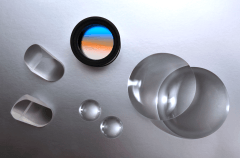Electronic components are the backbone of modern technology, powering everything from smartphones and computers to medical devices and aerospace systems. As these components become increasingly complex and miniaturized, the need for effective protection against environmental factors, mechanical stress, and electrical interference becomes paramount. One of the most effective methods for ensuring the longevity and reliability of electronic components is through the use of resin and varnish encapsulation surfaces. This article will provide a comprehensive overview of resin and varnish encapsulation, discussing the materials, processes, and benefits associated with this critical aspect of electronic component manufacturing.
Materials
Resin and varnish encapsulation surfaces are created using a variety of materials, each with its unique properties and applications. The most common materials used for encapsulation include:
-
Epoxy resins: Epoxy resins are thermosetting polymers that offer excellent adhesion, mechanical strength, and chemical resistance. They are widely used in electronic component encapsulation due to their ability to form a strong, durable bond with a variety of substrates.
-
Silicone resins: Silicone resins are known for their flexibility, high-temperature resistance, and excellent electrical insulation properties. They are often used in applications where components are exposed to extreme temperatures or require a high degree of flexibility.
-
Polyurethane resins: Polyurethane resins offer a balance of mechanical strength, flexibility, and chemical resistance. They are commonly used in applications where components are subject to mechanical stress or require protection from moisture and other environmental factors.
Benefits of Resin and Varnish Encapsulation for Electrostatic Protection
The use of resin and varnish encapsulation surfaces in electronic production and usage environments offers several benefits for electrostatic protection, including:
- Insulating properties: The insulating properties of resins and varnishes can help to prevent the buildup of electrostatic charge on the surface of encapsulated components, reducing the risk of ESD damage.
- Increased component lifespan: Encapsulation can help to protect electronic components from a variety of environmental factors, such as moisture, chemicals, and mechanical stress, which can extend the life of the component and reduce the likelihood of ESD-related failures.
- Improved safety: By creating a protective barrier between the electronic component and the surrounding environment, encapsulation can help to reduce the risk of ESD-related sparks or fires, which can pose a danger to workers and equipment.
- Reduced ESD sensitivity: Encapsulation can help to reduce the sensitivity of electronic components to ESD, making themless susceptible to damage during handling, packaging, and transportation.
- Enhanced performance: Encapsulated components often exhibit improved performance characteristics, such as reduced electrical noise and increased reliability, which can contribute to the overall performance of electronic devices and systems.
Best Practices for Resin and Varnish Encapsulation in Electronic Production and Usage Environments
To maximize the electrostatic protection benefits of resin and varnish encapsulation surfaces, it is important to follow best practices during the encapsulation process and in the handling of encapsulated components. Some of these best practices include:
- Proper surface preparation: Before applying the encapsulation material, it is essential to ensure that the surface of the electronic component or assembly is clean and free of contaminants, such as dust, grease, or moisture. This can help to ensure proper adhesion of the encapsulation material and enhance its insulating properties.
- Appropriate material selection: It is crucial to choose the right encapsulation material for the specific application and environment, taking into account factors such as temperature, humidity, mechanical stress, and chemical exposure. This can help to ensure that the encapsulation material provides the desired level of protection and performance.
- Consistent application: Applying the encapsulation material in a consistent, uniform manner can help to ensure that it forms a continuous, protective barrier over the surface of the electronic component or assembly. This can help to minimize the risk of electrostatic charge buildup and potential ESD-related issues.
- Curing and handling: After the encapsulation material has been applied, it is important to ensure that it is properly cured, following the manufacturer’s recommended curing conditions and time. Properly cured encapsulation materials will offer better protection against electrostatic discharge and other environmental factors. Additionally, it is essential to handle encapsulated components with care to avoid damage or contamination that could compromise the effectiveness of the encapsulation.
- ESD-safe work environment: Encapsulated components should be handled, stored, and transported in an ESD-safe environment, utilizing grounding, shielding, and ESD-safe materials and packaging to minimize the risk of ESD damage.




Leave a Reply
Want to join the discussion?Feel free to contribute!